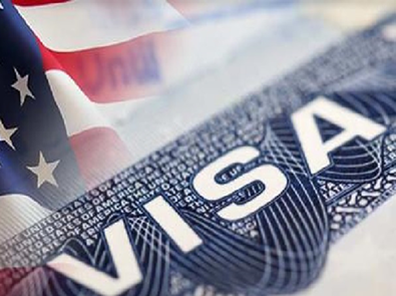
We recently reported on a USCIS publication about the questionable U visa, granted to aliens on the grounds that they have been crime victims in this country.
Today we examine the small (10-page) report in more detail, and describe the useful information that could have been secured about this controversial visa, but was not. The Biden administration is seeking to triple the number of U visas, which are currently overused in Hispanic communities as a specialized amnesty for a subset of law-breakers who have encountered other law-breakers. (A big majority of the U visa applicants are illegal aliens.)
The report, published last year by the Department of Homeland Security, deals with information secured in the government's own files on how aliens have used the program to secure green cards. It is called "U Visa Demographics" and is based on a review of Forms I-198.
Now, I have done research in the past based on digging through government forms and know what can be gleaned from such operations. Unfortunately, USCIS only skimmed through the data and ignored potential gold mines.
While the report does show the unusual concentration of these visas among aliens from Mexico and the Northern Triangle of Central America (El Salvador, Guatemala, and Honduras), 86.6 percent of the total, it misses the opportunity to examine the concentration of these visas on two variables — where they are filed and who helps the applicants file them. Were we to know where they were filed, we would have a better chance to understand the level of, and perhaps the significance of, these concentrations.
Are U visas applied for evenly among aliens throughout the nation, or are they concentrated (as I suspect they are) in certain cities and states? Does the distribution of these applications mirror the distribution of crime, or of all alien populations, or is it (as I suspect) much more localized?
Further, the I-918 carries the signatures of the lawyers (or, less frequently, other helpers) of the applicants. Are these lawyers spread around the country as the alien population is, or are the big majority of cases handled by a relatively small group of attorneys?
"U Visa Demographics" answers none of these logical, if politically awkward, questions.
If there are some lawyers who are doing a massive business with these applications, are there indications of suspicious activities, with identical patterns being reported again and again?
Similarly, there is a space on these forms that must be filled out by law enforcement authorities. To what extent is this concentrated, on one hand, or spread out, as crime is, nationwide? Do some police officers show up with unusual frequency on these forms?
The report does not touch upon these matters.
The Other Big Omissions. The I-918 is an 11-page form; all or parts of four pages deal with the criminal record (or lack of it) of the applicant.
There is no mention, at all, in the report of any of the replies to these questions; nor is there any apparent outreach to the nation's extensive and largely computerized crime records. The authors of the report apparently made no effort to quantify the number of criminals among the applicants, which they could do rather easily if they checked the FBI files.
Another, perhaps less significant, failure deals with the economic utility of these new green card holders. Are they useful members of the community, with jobs and Social Security numbers, or are they not? There is a place on the form where the SSN is to be entered; once a government agency has that information, it can ask the Social Security Administration for wage data (as I have done in the past while working on government contracts). It could also run checks with IRS to see the extent to which these aliens filed income tax forms.
In short, the nameless authors of this report could have provided us with useful information on the U visa holders' criminal, Social Security, tax, and employment records, but they opted not to do so. I cannot see this as a matter of neglect. They could have, similarly, reached out in areas of concentration to find out the welfare usage of the applicants' families. They must not have wanted to learn more, for fear of opening Pandora's box.
This represents, in all probability, a golden but missed opportunity. I doubt that the Biden administration will be calling for such studies in the future.
